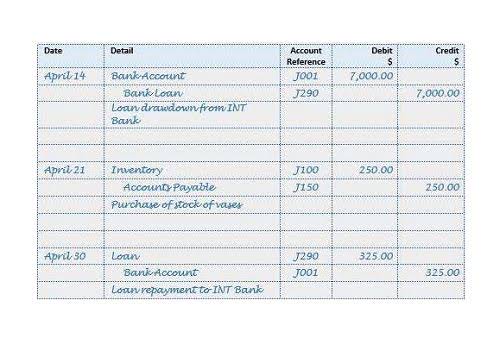
The right solution can simplify billing by automating manual tasks and eliminating error-prone processes, leaving you enough time to focus on completing the project. Alternatively, contractors can bundle labor, material, overhead, and profit all into a single unit and charge by that unit. However, if you are looking for something that also includes project management and client portals, it might be worth looking into an alternative like Copilot or Productive (more on that later). Square is a POS system and billing platform used by many different types of businesses — big and small, in-person or online. Because of its broad range of use cases for different industries, one of the areas Square thrives is in helping contractors with their billing operations.
- These documents provide detailed records that communicate the scope, duration, and cost of the construction work completed.
- However, you can significantly reduce this risk through skilled estimating, consistent job costing, and strategic bidding.
- Although the final cost is undetermined, you do need to provide a rough cost estimate by listing your hourly rate, an approximate number of hours, and a general list of materials.
- If there are any disagreements about the invoice amount, address the discrepancies quickly.
- If a project grows in scope, contractors can bill additional units as needed.
- Invoicing construction projects requires a lot of planning, detail, and communication from all parties.
Time and Materials

Obviously, construction billing methods that’s much quicker than the industry norm, and payment won’t come that fast for the majority of construction businesses. Still – don’t be afraid to ask for better payment terms, and don’t get pushed into accepting overly-burdensome payment terms. Building trust and a collaborative relationship with your customer will help on the path toward securing better terms. Just last year, only 8% of contractors said that their customers consistently paid them on time. Be sure to send your invoices as quickly as possible (while still being reasonable). Be sure that the client receives the invoice while the work is still fresh in everyone’s mind.

Construction billing basics (with construction invoice templates)
- This method is usually done on a percentage-of-completion basis following a payment schedule.
- The Smartsheet platform makes it easy to plan, capture, manage, and report on work from anywhere, helping your team be more effective and get more done.
- The practice of retainage, aka retention, has a tremendous impact on the construction industry.
- This construction-specific template auto-calculates the costs of materials, labor, and miscellaneous charges, including taxes.
- FreshBooks also integrates with different payment gateways, so you can find what works best for you.
- As you can see, construction billing methods come in many different shapes and sizes; each method has pros and cons that will work better for specific use cases.
Fixed price billing, or lump-sum billing, is when the contractor agrees to complete the project for a set price. However, the contractor may underestimate the project’s cost, leading to financial loss. An efficient construction billing process is essential for contractors to keep a project on schedule and budget. Unit pricing is suitable for projects with repetitive tasks or clearly defined units of work, such as road construction or roofing projects. It can also be combined with other billing methods, such as T&M billing for additional materials. Builders working with GMP will set an upper limit for the cost of the whole construction project.

Common Challenges in Construction Billing

Using billing software such as Moon Invoice can also help simplify billing methods and improve overall project management. Construction accounting can be a complex and challenging task for independent contractors and construction businesses of all sizes. With unique project-based structures, long-term contracts, and fluctuating costs, the financial management of construction projects requires specialized knowledge and practices. Efficient billing is a critical aspect of successful construction project management. Ensuring you choose the billing method that best fits the project’s scope and client needs is also fundamental to avoiding issues.
Invoice follow-up
This method is typically chosen for projects where the scope and costs are not clearly defined upfront, providing transparency for the client by detailing every expense. In this type of contract, all parties agree to a set price for the entire project before work begins. This means contractors must be able to accurately estimate labor, materials, and all other project costs in order to produce a well-defined scope of work. However, fixed-price contracts can still be altered or amended by change orders. Progress billing is when the contractor bills the client at certain milestones in the project, such as after a specific phase or after a certain percentage of work is completed. This method can help contractors maintain positive cash flow throughout the project but requires careful progress tracking.
Consider scalability for future business growth
- As the contractor completes various stages or milestones, they invoice the client for the value of the work minus the agreed-upon retainage amount.
- This practice often flows down to subcontractors and even sub-subcontractors.
- If subcontractors are unaware that retainage will affect their payment timeline, they may halt their work until resolving the dispute, thereby blocking other aspects of the project from completion.
- This lump sum contracts method provides cost certainty for the client but can be risky for the contractor if costs are underestimated.
- This clarity benefits not just the client by setting understandable expectations but also supports the contractor in justifying the project costs, thereby paving the way for smoother financial transactions.
In an industry where late payments are not uncommon, adding a discount for payments received in full prior to the due date is a smart choice. This is a firm yet generous payment term that all parties should be able to adhere to. The best way to avoid this type of friction is by moving all project tracking online. Using software income summary that tracks construction vehicles through GPS or logs operator hours digitally is a great place to start. Bonus points if the online data is visible to all parties so discrepancies can be avoided completely by everyone being on the same page. This invoicing practice can be risky for the stakeholders in charge of the project.
There’s way too much paperwork involved, and hardly anyone gets paid on time. To that end, here are a few best practices that can optimize your billing processes so you can get paid faster. While this method is ideal because you don’t have to front the cost of the project, it’s pretty rare. We sometimes see it when the project owner and contractor have a long-term relationship.
Top 5 Construction Billing Methods & Key Considerations
Keeping organized records of your costs will save time on a project in more ways than one. For instance, coding all costs correctly according to the project can make the invoicing process much more efficient. Additionally, keeping organized records of correct coding can help solve disputes between owners, contractors, and subcontractors. On other projects, vendors and subcontractors may Law Firm Accounts Receivable Management not be responsible to adhere to the prime contractor’s invoicing standards, and can simply send over their own invoice they send across all jobs. It will then be the GC’s responsibility to adhere to the prime contract on behalf of all hired subcontractors by submitting additional documentation alongside their payment application. Establish a consistent billing schedule to ensure timely and predictable cash flow.
